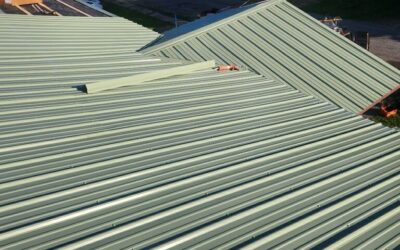The Lifespan of the Second Layer of Shingles: What You Need to Know
When it comes to roofing, there are a lot of decisions that homeowners have to make. One of the most common questions we receive at S&K Construction And Remodeling LLC is about adding a second layer of shingles. While this can be a tempting solution for some homeowners looking to avoid the cost of a full roof replacement, it’s essential to understand the long-term implications.
In this blog, we’ll dive deep into the lifespan of the second layer of shingles, covering the pros and cons, when it’s a good option, when it isn’t, and what to expect in terms of performance and longevity. Whether you live in Northeast Ohio, such as Youngstown, Euclid, or Lakewood, understanding how your roof works and how to maintain it is key to protecting your home and investment.
What Does “Second Layer of Shingles” Mean?
Before we dive into lifespan, let’s clarify what a second layer of shingles means.
When your roof starts to show signs of wear and tear, one option that some homeowners may consider is overlaying a second layer of shingles on top of the existing layer. This process is commonly referred to as a roof overlay or roofing over existing shingles. Essentially, a new layer of asphalt shingles is installed on top of the old, worn-out shingles.
This is a faster and cheaper alternative to completely tearing off the old roof and replacing it with a new one. It is particularly appealing to homeowners who want to save on labor and disposal costs. However, it’s not always the best choice, and the lifespan of this second layer can be impacted by various factors.
How Long Does the Second Layer of Shingles Last?
The lifespan of a second layer of shingles can vary, but typically, it will last less time than the first layer, and there are several reasons why.
1. The Condition of the First Layer
The first layer of shingles is crucial to the second layer’s performance. If the original roof is in poor condition, it can cause premature wear on the second layer. Existing problems like moisture damage, rot, or leaks can be trapped underneath the new shingles, which can compromise the second layer’s lifespan.
If the existing roof is already aged or has significant damage, the new layer of shingles may only last 10 to 15 years, or even less, depending on how compromised the old shingles are.
2. Quality of Materials
The quality of the shingles you use for the second layer also plays a major role in determining how long the roof will last. High-quality asphalt shingles can last up to 20-30 years, but when used as a second layer, their lifespan may be reduced. This reduction occurs due to factors such as heat buildup and moisture retention, which can weaken the shingles faster.
3. Weather and Climate Conditions
The climate in Northeast Ohio has a major impact on the lifespan of any roof. Homes in areas like Cleveland Heights, Euclid, and Lakewood experience significant seasonal variations, from harsh winters with snow and ice to hot, humid summers. These extreme conditions can accelerate the aging of the second layer of shingles.
For example:
- Heavy snow and ice can cause ice dams, leading to water backup that may infiltrate beneath the second layer.
- Hot summers can cause the shingles to soften and become more prone to damage from UV rays and thermal cycling.
- Windstorms can lift the edges of shingles, causing them to curl, crack, or even fly off.
In general, a second layer of shingles in climates with harsh weather conditions may last 10 to 15 years, or even less, compared to the full lifespan of shingles in milder climates.
4. Ventilation and Roof Structure
Proper roof ventilation plays a critical role in extending the lifespan of shingles. Without proper ventilation, the heat from the attic can build up and cause the shingles to degrade much faster. In the case of a second-layer roof, insufficient ventilation can lead to trapped moisture, which will shorten the lifespan of the new shingles significantly.
In general, poor ventilation can reduce the lifespan of the second layer of shingles by 5 to 10 years, and this is an often overlooked factor by homeowners looking to save money on roof replacements.
Pros and Cons of Adding a Second Layer of Shingles
Before deciding to overlay a second layer of shingles, it’s important to weigh the pros and cons. Here’s what you need to consider:
Pros:
- Cost-Effective: The primary advantage of adding a second layer of shingles is cost. Since the existing roof doesn’t need to be torn off, you can save significantly on labor and disposal costs.
- Less Disruption: A second layer of shingles can typically be installed much faster than a full replacement, which means less disruption to your home and daily life.
- Quicker Installation: Roof overlays are generally quicker than full replacements because they don’t involve removing the old shingles, which is time-consuming.
- Temporary Solution: If you’re not ready for a full roof replacement but need a short-term fix, a second layer can provide an additional layer of protection while you plan for a future replacement.
Cons:
- Reduced Lifespan: As mentioned earlier, the second layer of shingles doesn’t last as long as a full roof replacement. Most second layers last 10 to 15 years, which is significantly shorter than a typical roof.
- Traps Existing Problems: If there are problems with the first layer of shingles (e.g., leaks, moisture damage, or improper installation), those issues will be trapped underneath the second layer, which can worsen over time.
- Limited Options for Roof Repairs: Adding a second layer limits your ability to make repairs on the original roof. You’ll also face difficulties if you need to inspect or repair issues beneath the second layer.
- Potential for Reduced Home Value: While it might be cheaper in the short term, many potential buyers may shy away from a home with a second-layer roof. This could affect your home’s resale value in the future.
- Voided Manufacturer Warranties: Many roofing manufacturers have strict guidelines regarding the installation of multiple layers of shingles. Adding a second layer may void the warranty of the new shingles or the manufacturer’s warranty on the original shingles.
How to Extend the Lifespan of Your Second Layer of Shingles
While the lifespan of a second layer of shingles is generally shorter than a full roof, there are several steps you can take to help maximize its longevity. Here are some tips for homeowners in Cleveland Heights, Beachwood, and Youngstown:
1. Ensure Proper Ventilation
Adequate ventilation is essential to prevent moisture buildup and heat damage under your shingles. Ensure your attic has proper ventilation to allow airflow. This can be done by installing vents in your roof and ensuring that your attic is not trapping heat or moisture.
2. Install High-Quality Shingles
Choosing high-quality shingles for the second layer can help extend its lifespan. While higher-end shingles may cost more upfront, they are more durable and can better withstand the harsh conditions of Northeast Ohio.
3. Maintain Regular Roof Inspections
A second-layer roof will require ongoing maintenance to catch any problems early on. Have your roof inspected regularly to look for signs of damage, such as curled shingles, water infiltration, or leaks. Early repairs can prevent more costly damage down the road.
4. Consider Replacing Flashing and Underlayment
When installing a second layer of shingles, it’s essential to replace the flashing and underlayment as well. This helps prevent water from infiltrating the roof structure and ensures the second layer performs optimally.
5. Keep the Roof Clean
Debris like leaves, branches, and moss can build up on your roof, causing moisture to accumulate and lead to rotting or mold growth. Regular cleaning and removal of debris can help extend the life of your second layer of shingles.
When Is a Second Layer of Shingles a Bad Idea?
Although adding a second layer of shingles can be a good solution for some homeowners, it’s not always the best choice. Here are some situations when you should avoid adding a second layer:
1. If the First Layer Is Damaged
If the first layer of shingles has significant damage (e.g., leaks, rotting, or structural problems), a second layer won’t solve the underlying issue. In fact, it will only trap the problem, leading to more extensive damage over time.
2. If You Plan to Sell the Home Soon
If you’re planning to sell your home soon, a second-layer roof may hurt your chances of getting a good price. Many buyers may be wary of a roof that has multiple layers, as it may indicate potential issues or lead to higher repair costs down the line.
3. If You Need a Long-Term Solution
If you need a long-term roofing solution, a second layer of shingles is not the ideal choice. It may provide short-term benefits, but for long-lasting protection, it’s best to opt for a full roof replacement.
Conclusion: Is Adding a Second Layer of Shingles Right for You?
When it comes to the lifespan of a second layer of shingles, it’s essential to consider your long-term goals for your home. A second layer can be an attractive option for homeowners looking for an affordable, quick fix, but it comes with a shorter lifespan and potential risks.
At S&K Construction And Remodeling LLC, we specialize in roofing and siding solutions for homes across Northeast Ohio, including Lakewood, Euclid, and Youngstown. Our expert team can help assess your roof, provide guidance on whether a second layer is a good option for you, and ensure that your roof lasts as long as possible.
If you’re unsure about your roofing options or need help with a second-layer roof, reach out to us today for a free inspection and to discuss the best solution for your home!
Contact us: 📞 440.235.3124
📍 Proudly serving Lakewood, Youngstown, Cleveland Heights, and surrounding areas!
https://encrypted-tbn0.gstatic.com/images?q=tbn:ANd9GcTr5Gf6IZaQhcYMbuy-SSd1llOG5S9hWOEYhA&s
 (440) 307-2060
(440) 307-2060





